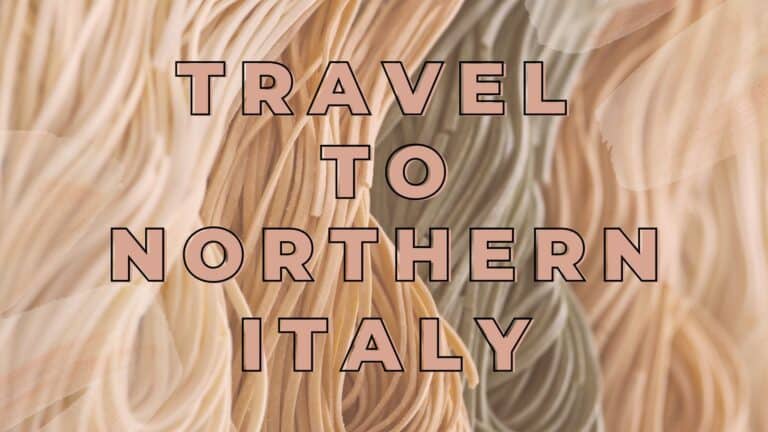Table of Contents
You’re in Italy, and hunger strikes. Scanning your options, you spot everything from a ristorante to a trattoria, not to mention a taverna and bar. And what’s an osteria anyway?
The long and short is that all of these choices represent the classic Italian restaurant types you’ll come across when you travel to Italy. So the answer lies not so much in their difference but in what kind of Italian food you’re in the mood to eat.
The Historic Differences
Traditionally, the difference between, say, a trattoria and an osteria, meant how fancy or casual you wanted your dining experience to be. The meaning of these restaurant types would signify everything from the type of service you received to the type of food served, or whether any food was even served at all.
These days there are all sorts of different types of restaurants in Italy from ramen to juice bars and vegan joints, especially in cosmopolitan cities like Milan and Rome. So, you might wonder if there’s even a point in understanding the meaning of these traditional terms.
Yes, there is! Because whether you’re a history buff craving the full scope of Italian cuisine or simply want to know the definition of an osteria, understanding the differences between the country’s most traditional restaurant types can prove super helpful.

The Most Common Italian Restaurant Types
We’re sharing the differences between the traditional types of restaurants so you know where you’re most likely to find regional specialties, which spots are more formal, and where to go for coffee or a quick lunch.
Bar
In Italy, a bar (remember to roll that “r”) is most similar to what you think of as a neighborhood cafe stateside. Head to a bar for a quick espresso or cappuccino and pastry for breakfast (while standing!) Italian style.
Or, grab a snack and sip in the afternoon, or even aperitivo toward evening. You can get lunch here, too. In fact, it’s not uncommon for locals to visit their favorite bar several times in one day.
Note: In larger cities, there may be a fee to sit at a table for service. Opt instead to stand at the counter to avoid that.
Caffè
An Italian caffè is similar to a bar, but they’ll likely have more tables than a bar and, as the name suggests, more coffee options. Do like the locals and order a foamy cappuccino or milky latte in the morning, a macchiato to pep up your afternoon, and an espresso after dinner.
Traditionally, Italy’s intellectuals and creative society would gather at a caffè (vs. a grab-and-go situation at a bar.) Nowadays, a caffè is synonymous with a bar, though don’t miss an opportunity to stay awhile at historic spots like Caffè Gilli in Florence; they’re great places to people-watch while you sip and nibble.
Enoteca
If it’s the wine you’re after (which is often the case around here), beeline for an enoteca. Traditionally, these wine-focused establishments are a tad more upmarket than an osteria and taverna and focus on local wines that you can enjoy by the glass or purchase to take home. For context, a modern enoteca is probably closest to the American wine bar.
As with osteria (see below) there are modern restaurants that use the term enoteca to emphasize their focus on wine even though they’re full service and not simply a wine bar. Case in point? Florence’s famed Enoteca Pinchiorri
Osteria
During our group trips to Italy, the two most FAQs about restaurants are “what is a trattoria” (see below) “how do you pronounce osteria”, and “what is an osteria?” As for pronunciation, it’s “oh-stare-ree-ah” so now let’s get into what it means.
Even less formal than a traditional ristorante or a trattoria is an osteria. While osterie today serves food, back in the day they only served wine and you had to BYO food!
There is only a handful of old-school osterie in Italy today, like Osteria del Sole in Bologna. These days you can for sure find at least a simple, rotating evening menu (though most are open for lunch too) of local specialties to pair with the establishment’s wine offerings.
Those of you who are looking to travel to Italy soon, have probably noticed that some celebrated modern restaurants like A’Roma Osteria Lecce and the foodie destination Osteria Francescana have added the word to their names even though they’re a bit more formal than a traditional osteria would be.
Ristorante
In Italy, a ristorante is code for a full-service restaurant, complete with a sommelier or wine expert. Traditionally, the ristorante was the most formal and upscale dining experience. If you’re in search of Michelin-star restaurants that are worth a special journey, this is the category for you.
You can still expect sit-down service at a ristorante today, though now the term might be more of a marketing tool than a way to distinguish between other types of restaurants, like the trattoria and osteria (and on that note, here are our tips to ensure you never have a bad meal when you travel to Italy––it can happen!
Taverna
A taverna, on the other hand, is more like a pub where you’ll find wine instead of beer. You’ll find food too, and expect it to be traditional and simple. Locals usually stop into a taverna after work to catch up with friends over a drink and some snacks.
A traditional taverna was usually found in smaller mountain towns and back in the day, you could also spend the night if you wanted.
Tavola Calda
Think of the Tavola calda like a cafeteria, where you can go for lunch––just choose what you want to eat from the “hot table.
Hot dishes like Carne arrosto (roasted meat) are prepared the same day from a selection behind a counter, but also find Insalata (salad), pasta, and pizza a taglio (pizza by the slice), and pastries.
Trattoria
Speaking of, a trattoria is indeed a restaurant, but the vibes are more casual than a ristorante. At a trattoria expect traditional, seasonal Italian dishes, and likely at a lower price point––and in a cozier setting––than a ristorante.
Traditionally, trattorie have been family-run eateries found off the beaten path on say, a side street instead of on the main street or highly trafficked area.
The -eria Trick
Sometimes, it’s easy to guess what to expect from an eating establishment because you can recognize a familiar word in its name. For example, find pizza at a pizzeria, gelato at a gelateria, polenta at a polenteria (a northern Italy specialty ––which btw, why don’t we have this stateside)? Additionally, beer lovers can head toward a birreria, you’ll find spaghetti at a spaghetteria, fried food at a friggitoria, and so on.
The country seems to have thought through all of the scenarios of how you prefer to dine, and as these traditional eatery definitions illustrate, there is no shortage of food options when you travel to Italy.
Have Us Plan Your Italy Trip
Did you know we’re also a boutique travel agency that specializes in Italy travel planning? If you’re looking to plan one of the best trips to Italy, our Italy trip planner services are here to help you plan your perfect itinerary.
Photo Credit: Christine Davis

1 thought on “What’s An Osteria? And Other Italian Restaurant Types”
This is a good common sense article. Very helpful to one who is just finding the resouces about this part. It will certainly help educate me.